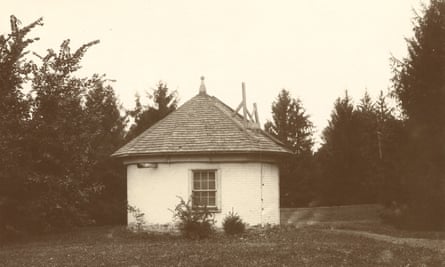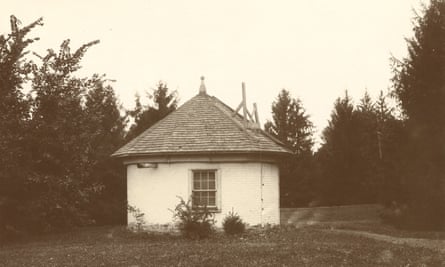Construction workers at Michigan State University hit something hard earlier this summer while installing hammock poles into the ground outside a residence hall.
A closer inspection then revealed it was the foundation of a 140-year-old observatory that was demolished in the 1920s and – over the course of a century – became buried underground.
The discovery has now offered a rare on-campus archaeology experience for students, an opportunity for which they usually have to travel abroad. The university, also known as MSU, will coordinate a dig for students starting next summer through its Campus Archaeology Project.
MSU’s project “provides an essential venue of professional training for both graduate students and undergraduates in archaeology fieldwork in analysis,” said Ben Akey, an anthropology doctoral student and campus archaeologist who, with a team of students, conducted an initial survey of the observatory site in June.
Akey, in an MSU press release, added: “With a campus this old, there’s a lot of historic materials, archaeological materials that [could] be disturbed by all the construction on campus.”
Students of the university – founded in 1855 – will work to preserve any artifacts found on the site, which could range from pencils to fragments of a telescope that was left behind.
The building was constructed in 1881, according to the university, and was demolished in the 1920s, Akey told the Washington Post. The university built another observatory on campus, still operating today, in 1969.
The university’s planning facilities, which coordinates construction projects on campus, collaborates with the Campus Archaeology Project to ensure anything detected during construction is properly researched and preserved.
“The campus archaeology program is designed to protect and mitigate our below ground heritage,” Stacey Camp, director of the project and professor of anthropology, said in the press release. “We collaborate with [the infrastructure planning and facilities department] on construction projects and we are involved in preplanning stages to ensure that if they potentially hit an archaeological site, we can protect it in some manner.”

Once the construction workers came across the building’s foundations, researchers used university records to determine that the site was the former home of the observatory. The university’s archeology program sent students to survey the site in June. After digging for weeks, they finally struck cobblestone and mortar that was part of the foundation.
“It’s a weird common occurrence in archaeology,” Akey told the Washington Post. “Just as you’re about to move on from a site, you end up finding something that sticks you there for another few weeks.”
Students are hoping the dig will help them get insight into the history of MSU, which was founded as a school focused on agriculture less than 30 years before the old observatory was constructed.
In a field where experience with digs is essential for job opportunities, archaeology students will no longer have to travel far to be a part of uncovering history.
“You can sit in a classroom and learn the steps of how you’re going to lay out your grid and how you need to take not of your stratigraphy as you’re digging down for your excavation unit,” Morgan Manuszak, an MSU senior who is part of the dig, told the Washington Post. “But you don’t really get a feel for it until you’re doing it.”
Join the exciting world of cryptocurrency trading with ByBit! As a new trader, you can benefit from a $10 bonus and up to $1,000 in rewards when you register using our referral link. With ByBit’s user-friendly platform and advanced trading tools, you can take advantage of cryptocurrency volatility and potentially make significant profits. Don’t miss this opportunity – sign up now and start trading!






Recent Comments